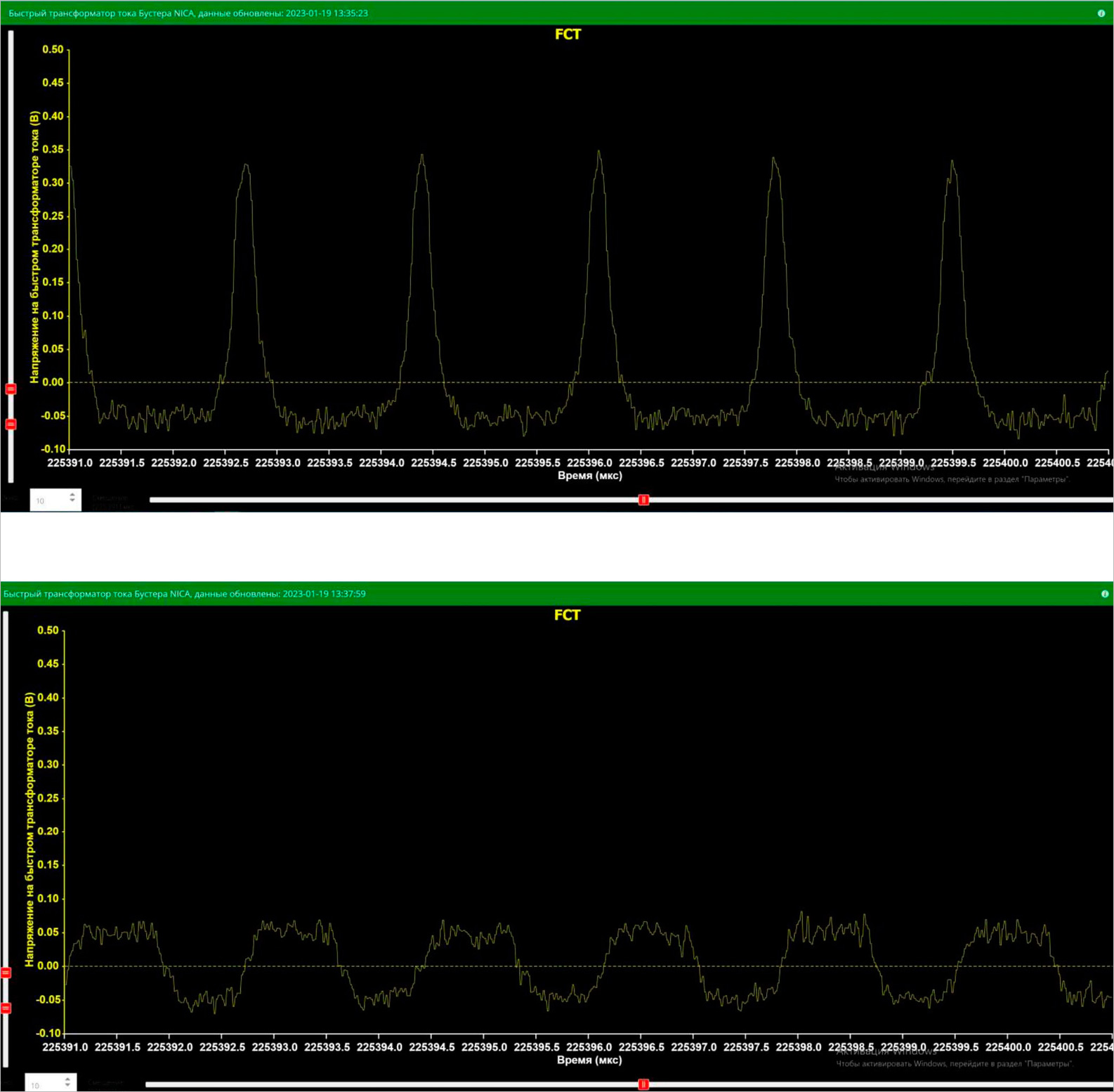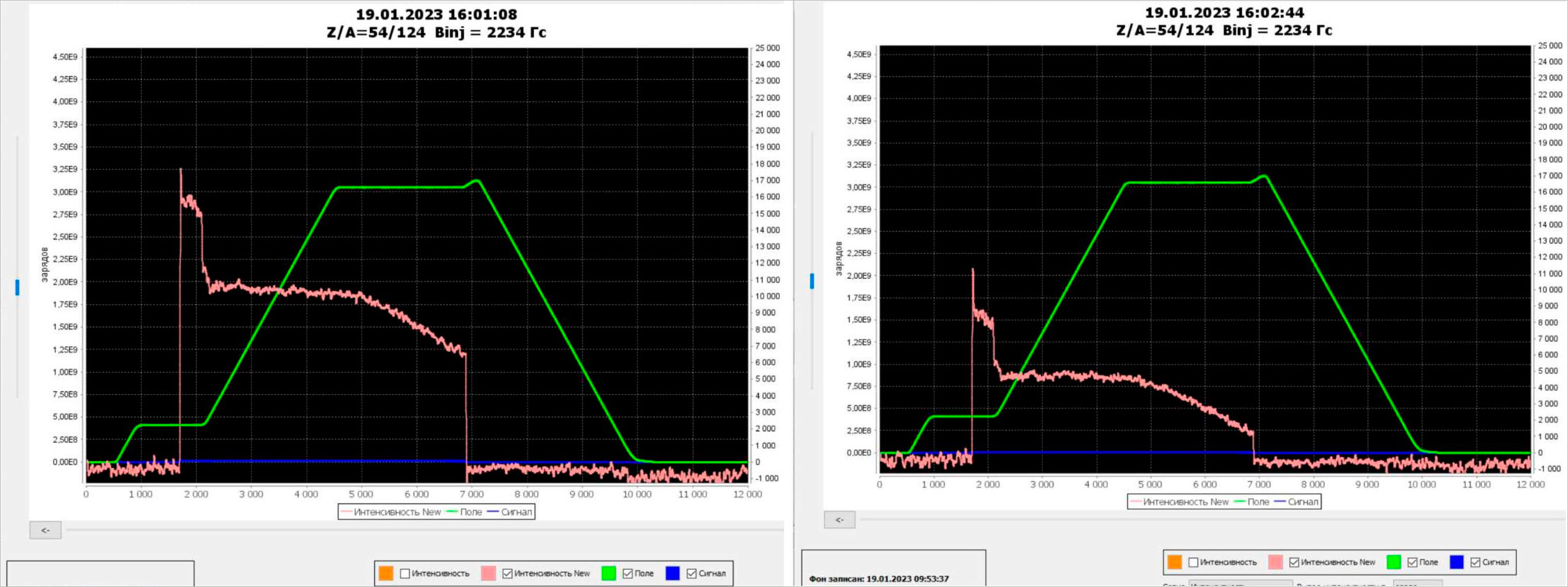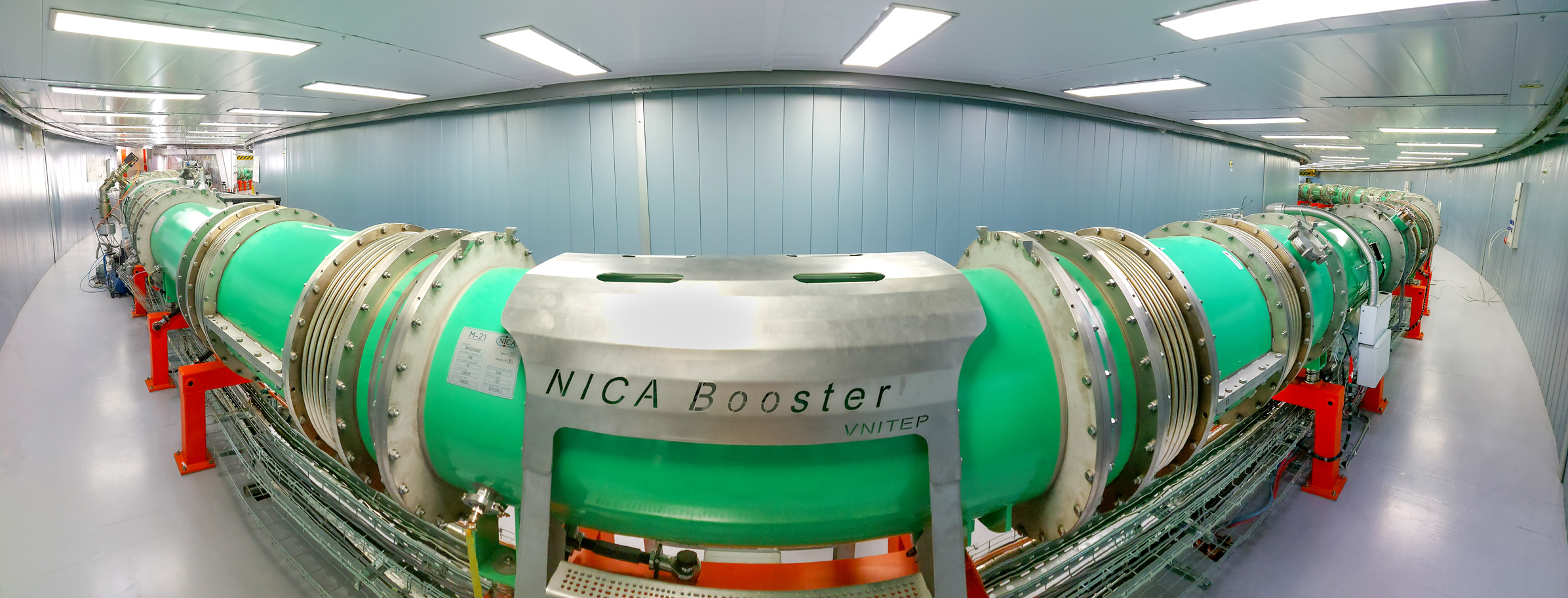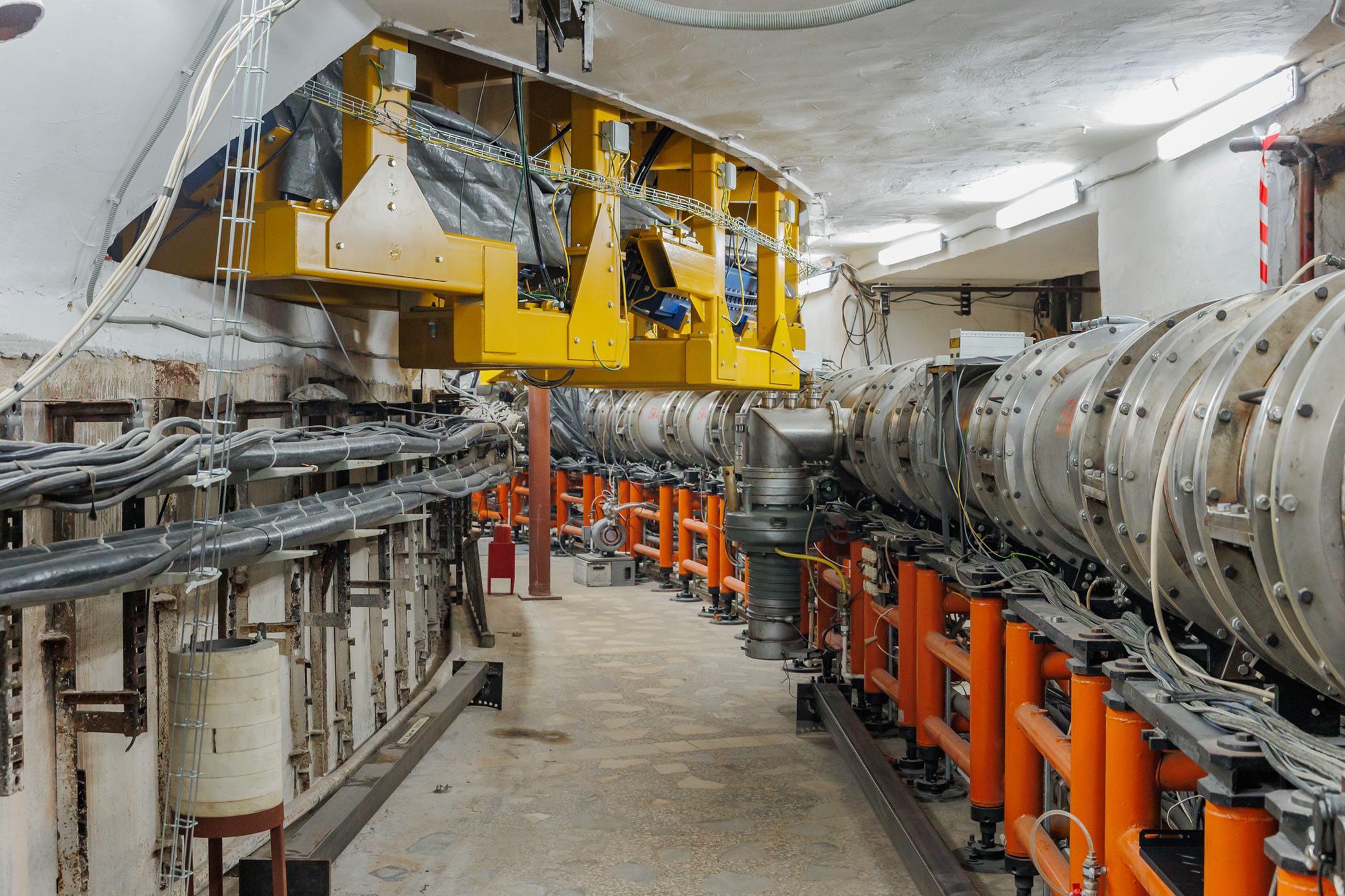Electron cooling of heavy xenon ions obtained at NICA Complex
News, 06 February 2023
During the 4th commissioning cycle, specialists optimised electron cooling of 124Хе28+ ions at the Booster of the NICA Accelerator Complex. The achieved reduction in the beam size in the Booster resulted in more efficient transfer of it to the Nuclotron. It increased the intensity of the accelerated beam by about one and a half times. Specialists obtained xenon cooling in December. However, at the moment, they have optimised and evaluated it using additional diagnostics, which allows scientists to process results quantitatively and more accurately. At the same time, during the beam extraction to the detector of the BM@N experiment, the speed of the event registration doubled. It will allow collecting statistics faster.
Specialists tuned the electron cooling system within the current commissioning cycle at NICA during the operation of the accelerator complex for the BM@N experiment in the so-called “background” mode. “The result is truly outstanding. According to the pictures, a bunch of accelerated particles, initially occupying about half the size of the high-frequency capture region, is shrunk to one tenth of its size during the beam circulation,” Deputy Head of the Accelerator Department of the Laboratory of High Energy Physics Anatoly Sidorin commented on the result. Specialists cooled ions at an injection energy 3.2 MeV/u with the high-frequency system of the Booster turned on. They perfectly observed the cooling process by the evolution of the ion bunch length measured by the fast current transformer in the accelerator ring.
 Data obtained at the fast current transformer of the Booster (Rogovsky belt) with and without cooling
Data obtained at the fast current transformer of the Booster (Rogovsky belt) with and without cooling
The idea of the electron cooling method proposed by Academician Gersh Budker is that an electron beam is produced and merged with an ion beam trajectory in one of the straight sections of the cyclic accelerator. Electron cooling is basically the cooling of a hot ion gas in a cold electron gas. During the heat exchange process, a bunch is shrinking.
Researchers under the guidance of Igor Meshkov have conducted experiments on electron cooling of helium, carbon, and iron ions since the first run at the Booster. Igor Meshkov is one of the pioneers of the method. Scientists observed the cooling effect using an ionisation profile monitor and surely recorded it. To obtain a design cooling tempo, it is necessary to align the ion beam with the electron one. The diagnostics available in the Booster cooling section allows measuring the position of ion and electron beams at the entrance and exit of the section. However, to work correctly, it should receive information obtained by the high-frequency system of the Booster and other subsystems. “During the current run, a team under the guidance of Vladimir Reva from Novosibirsk has taken part in the cooling adjustment. The help of colleagues who perfectly know and understand their equipment was invaluable,” Anatoly Sidorin emphasized. “Thanks to them, both beams were accurately aligned in the cooling section and specialists obtained cooling times close enough to the expected ones. In addition, they are hundreds of milliseconds at injection energy.
 Influence on the beam intensity in the Nuclotron — with cooling, the intensity is higher
Influence on the beam intensity in the Nuclotron — with cooling, the intensity is higher
Electron cooling is widely used in the world. However, after pioneering research at Budker Institute of Nuclear Physics of SB RAS, it is no longer used on the territory of Russia, the country of the JINR location. Specialists of INP have developed several systems for European countries and China. Nowadays, thanks to the NICA Project, this technology has returned to its homeland. The advantage of the cooling system of the Booster is the highest quality of the magnetic field in the cooling section, which leads to faster cooling.
During the current run, a project team has achieved significant success in solving the problem of continuous operation of the cooling system throughout the whole run. One of the problems with the operation of electron cooling systems is the high intensity of the electron beam in the cooling section. The system operates in the mode of electron energy recuperation. It means that electrons are accelerated at first. Afterwards, they are slowed down. The thermal load on the electron collector is low. Thus, the pumping system easily copes with the release of gas from the collector walls. However, in the cooling section, the intensity of the electron beam can be several tens of kilowatts in the Booster and up to two megawatts, if talking about the cooling system of the collider. “To put it simply, if you misdirect the beam and touch the wall of the vacuum chamber somewhere, then vacuum conditions will immediately become worse, the gates at the entrance and exit of the section will close, and the entire accelerator complex will be stopped for some time. In the worst case scenario, the cathode of the electron gun may burn out and a rather complicated and long repair period will be required. Therefore, the long-term operational stability of all power sources and the professional training of personnel are the first things to provide,” Anatoly Sidorin said.
Precision tuning and accurate measurement of all system characteristics require the development of ion beam diagnostics in the Booster and measurement with specially selected parameters of the magnetic field cycle. For this reason, specialists of the project say that it would be useful for comprehensive testing to conduct a separate run at the Booster specifically for electron cooling. The next stage is the cooling implementation at an ion energy of about 60 MeV/u necessary for the operation of the complex during beam injection into the collider.
It should be mentioned, that the developed electron cooling system can be used not only in high-energy physics. One of its applications, which is currently under study, is nuclear medicine. With the help of electron cooling, it is possible to produce a very small, fractions of a millimeter, transverse beam of ions for radiation therapy. With its help, specialists can localise the irradiated area with high accuracy.

